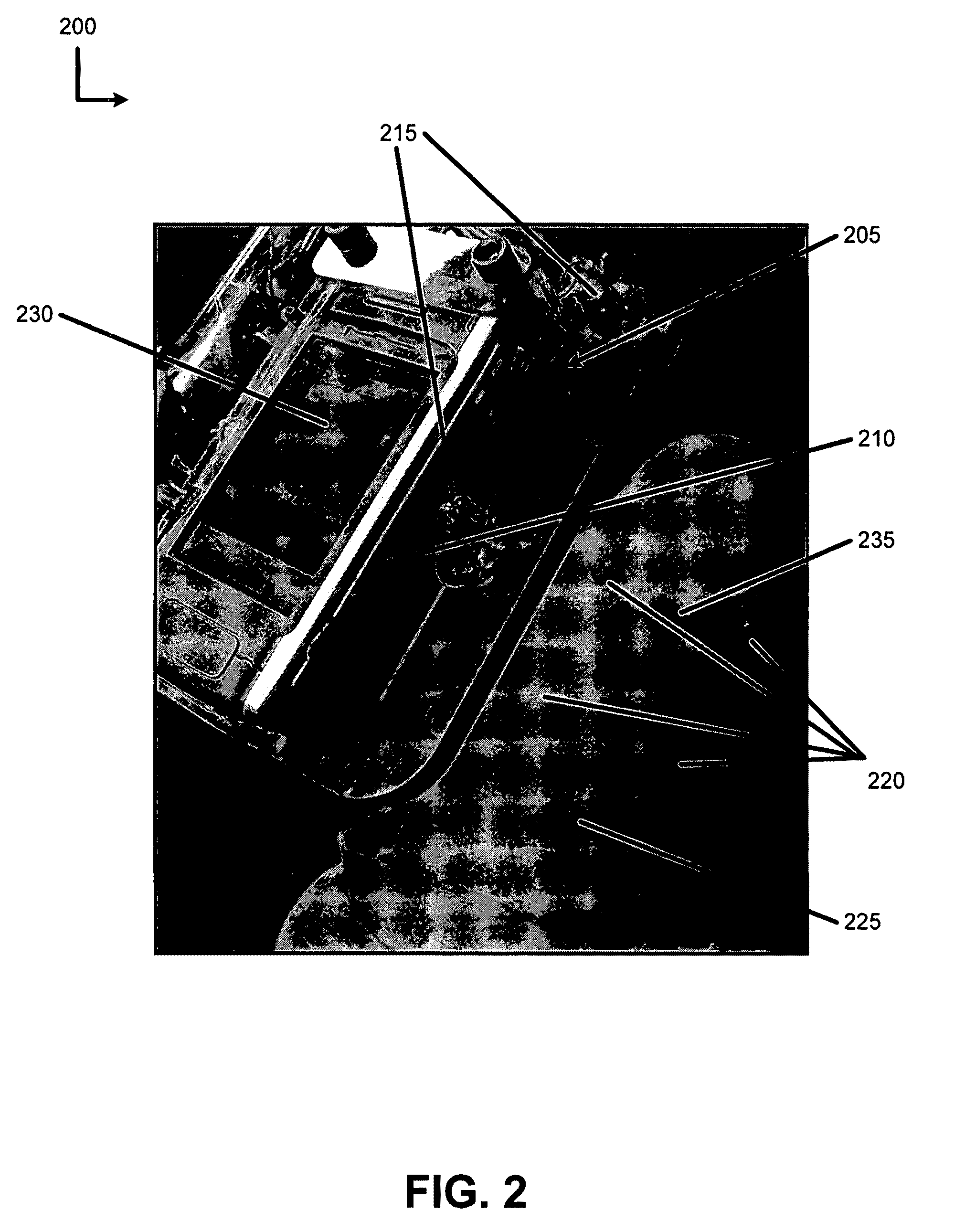Systems and methods for the measurement of surfaces
a technology of biological surfaces and systems, applied in the field of surface characterization, can solve the problems of chronic wounds, limiting the autonomy and quality of life of the geriatric population, and 20 percent of the hospitalized population
- Summary
- Abstract
- Description
- Claims
- Application Information
AI Technical Summary
Benefits of technology
Problems solved by technology
Method used
Image
Examples
example 1
[0063]Not all wounds, however, will be easily found by the computer vision component. In this case, the judgment of the wound boundary is left up to the user of the device. The user can be prompted to draw a boundary around the wound. As previously stated, repeatability of measurements is more important than absolute accuracy when monitoring wound progress. While the same user may be able to make the same measurements repeatedly with existing methods, it is quite difficult to ensure that multiple users will take measurements in the same way. For example, in the ruler based methods, it is quite common for different users to choose different directions for the maximum diameter of the wound.
[0064]In order to develop a better understanding of the issues with repeatability when tracing the wound in our interface, we performed an experiment involving three members of the design team and two wound images as illustrated in FIG. 10A and FIG. 10B. First, each user was given a demonstration of...
example 2
[0066]To test the computer vision component, two tests were performed. A square (3.8 cm×3.8 cm×0.1 cm) was cut into green foam. The surface of the square was painted brown. To test how the algorithms respond to changes in the camera-to-wound distance, the wound detection unit was mounted on rig with a vertically movable platform. Using the movable platform, the foam wound shape was photographed from various heights and the computer reported area was recorded for both the simple distance correlation and skew correction schemes. The results are shown in Table 2.
TABLE 2Distance (cm)Direct Correlation1714.252014.252513.723013.40
[0067]The mean of the area by triangulation approach is 13.76 cm2 with a standard deviation of 0.485 (3.52% as a percentage of the mean). This indicates a high value of repeatability. The difference of the mean compared with actual known area to known area is about 6.3%. For the direct distance correlation method the mean is 13.86 cm2 with a standard deviation of...
example 3
[0068]For quantifying the effect due to skew, the device was mounted on a bar that could be rotated through various angles along a single axis which was orthogonal to the camera's line of sight. The foam wound was photographed for 2 different heights and from various angles. Table 3 gives the area values reported.
TABLE 3Angle °Dist = 19.5 cmDist = 17.7 cm013.6413.711013.1713.851513.2213.812013.8614.313014.0814.623513.3114.51
[0069]The mean is 13.84 cm2 with a standard deviation of 0.457 (3.3% as a percentage of the mean). Comparing these values to values from Example 2, the standard deviation value of 0.420 obtained from the present experiment is similar to the one obtained when the camera was kept exactly horizontal. Thus, almost the whole error due to the skew was corrected for in the range of angles 0° from vertical to 35° from vertical. FIG. 11 illustrates the area measurements as skew increases. FIG. 11 further demonstrates the difference between when the skew correction procedu...
PUM
 Login to View More
Login to View More Abstract
Description
Claims
Application Information
 Login to View More
Login to View More - R&D
- Intellectual Property
- Life Sciences
- Materials
- Tech Scout
- Unparalleled Data Quality
- Higher Quality Content
- 60% Fewer Hallucinations
Browse by: Latest US Patents, China's latest patents, Technical Efficacy Thesaurus, Application Domain, Technology Topic, Popular Technical Reports.
© 2025 PatSnap. All rights reserved.Legal|Privacy policy|Modern Slavery Act Transparency Statement|Sitemap|About US| Contact US: help@patsnap.com



